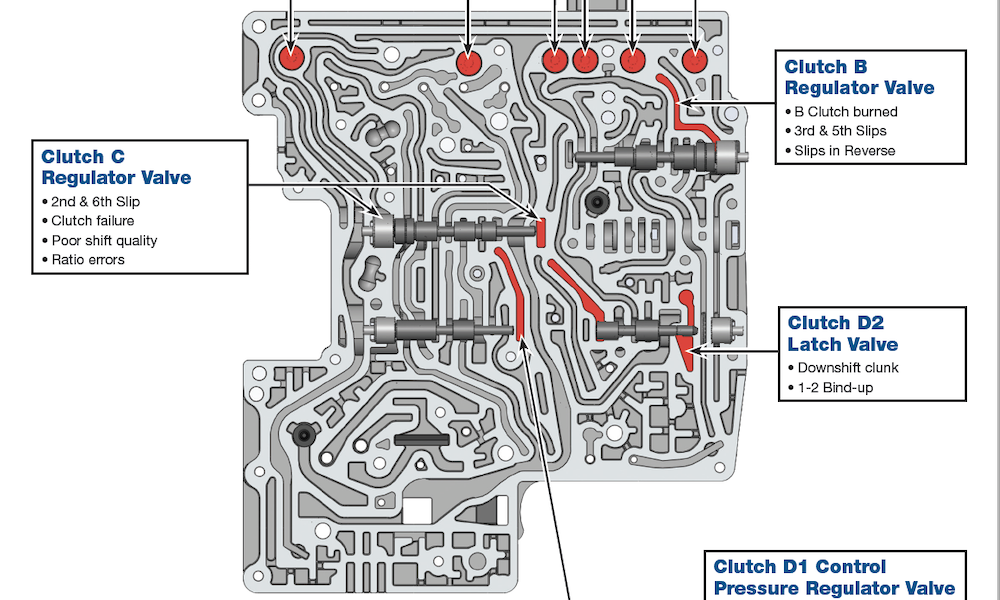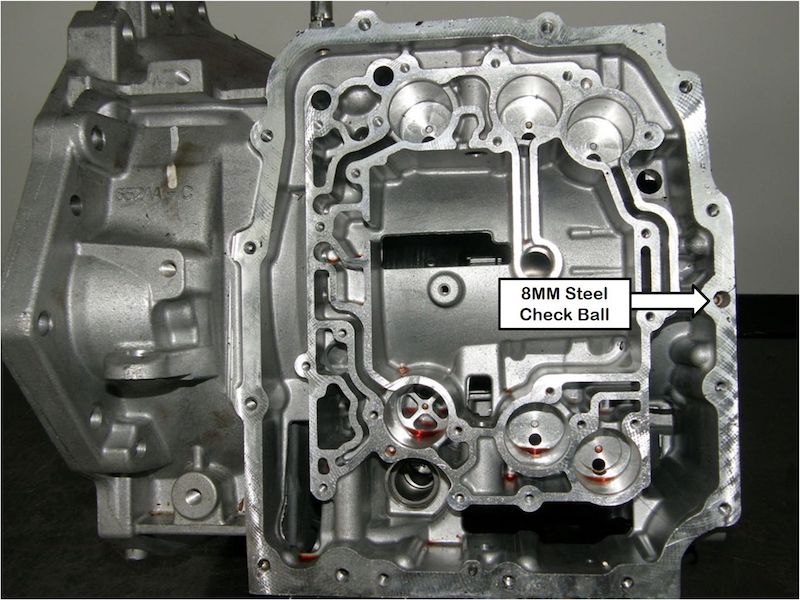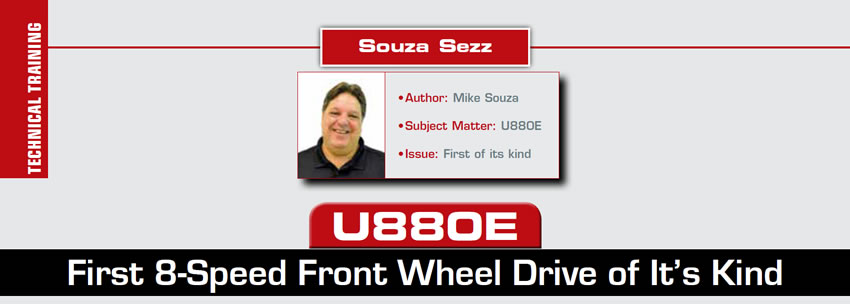
Souza Sezz
- Author: Mike Souza
- Subject Matter: U880E
- Issue: First of its kind
This Aisin series front-wheel-drive, eight-speed automatic transmission is the first eight-speed front-wheel-drive of its kind and referred to as the AWF8F35/40/45/50. It’s also referred to as GA8F22AW by BMW, AF50-8 by GM, U880E by Lexus/Toyota and TG-81SC by Volvo to name a few. Its size and package is designed to replace the preceding six-speed AWTF80-SC front-wheel-drive automatic using the same amount of space, while increasing total gear ratio and reducing gear space. This transaxle first appeared in the U.S. in the 2013 Lexus RX350 F Sport. The gear ratios are as follows using the Volvo V90 as an example: first- 5.250, second- 3.029, third- 1.950, fourth- 1.457, fifth- 1.221, sixth- 1.000, seventh- 0.809, eighth- 0.673, reverse- 4.015, final drive- 2.955, FWD- 3.075, AWD- sixth gear being 1:1 and seventh and eighth gear are overdriven. Note: mainly the final drive changes on other models.
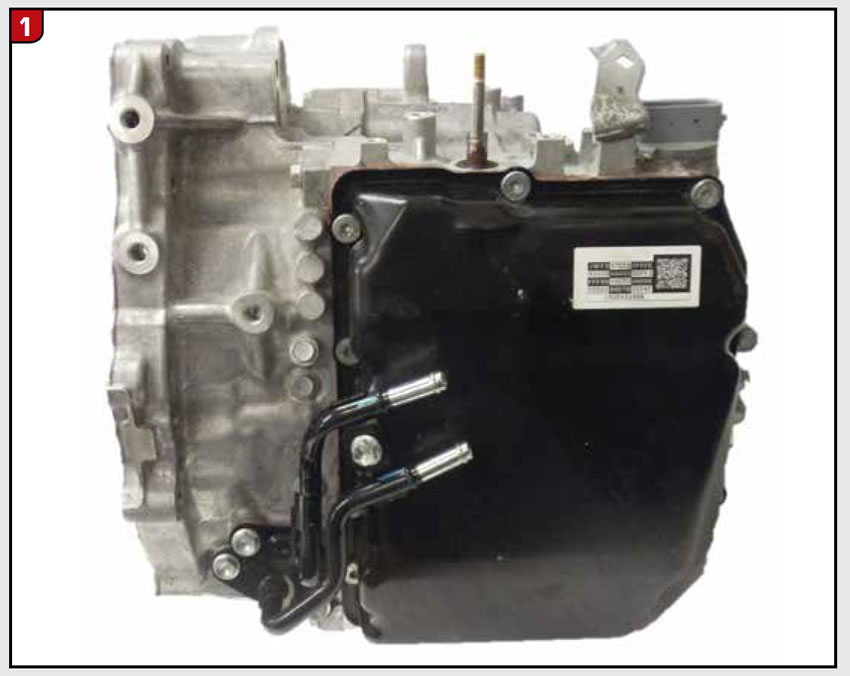
This transaxle has the same power flow as the 2008 and later Lexus Aisin AA80E/F rear-wheel-drive transmission. One major difference is, instead of a B1 Brake Clutch AWF8F35 uses a B1 Brake Band. There is a two-planet (simple front/ravigneau rear) lepeletier gear set with a four-pinion differential. The front planet is part of the input shaft with the front sun gear splined to the pump stator support. The TCM and Range Sensor are combined as shown below (at the top of the transmission) similar to GM and Volvo. Lexus/Toyota the TCM is not located on the transmission. Failsafe to third gear will occur when a failure is detected from first to fourth gear and failsafe to seventh gear, when a failure is detected from fifth to eighth gear.
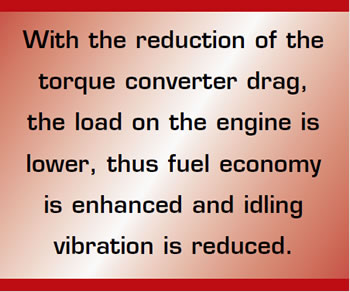
The B1 brake band holds the C3/C4 drum, the B2 brake clutch holds the ravigneau plane, the F1 one-way roller clutch (sprag) also holds the ravigneau planet and there are four driving clutch assemblies. The driving clutch assemblies are the C1 clutch applied in first, second, third, fourth and fifth gear, which drives the rear ravigneau sun gear. The C2 clutch applied in fifth, sixth, seventh and eighth gear, which is connected to the input shaft and front simple planet assembly and drives the ravigneau planet assembly. The C3 clutch applied in third, seventh and reverse gear, which is driven by the front internal (ring) gear. This causes the C3/C4 drum to drive the front ravigneau sun gear at half the input ratio. The last driving clutch, the C4 clutch, is applied in fourth and sixth gear and it’s driven by the front simple planet assembly. This causes the C3/C4 drum to drive the front ravigneau sun gear at the same ratio as the input ratio (Figure 2).
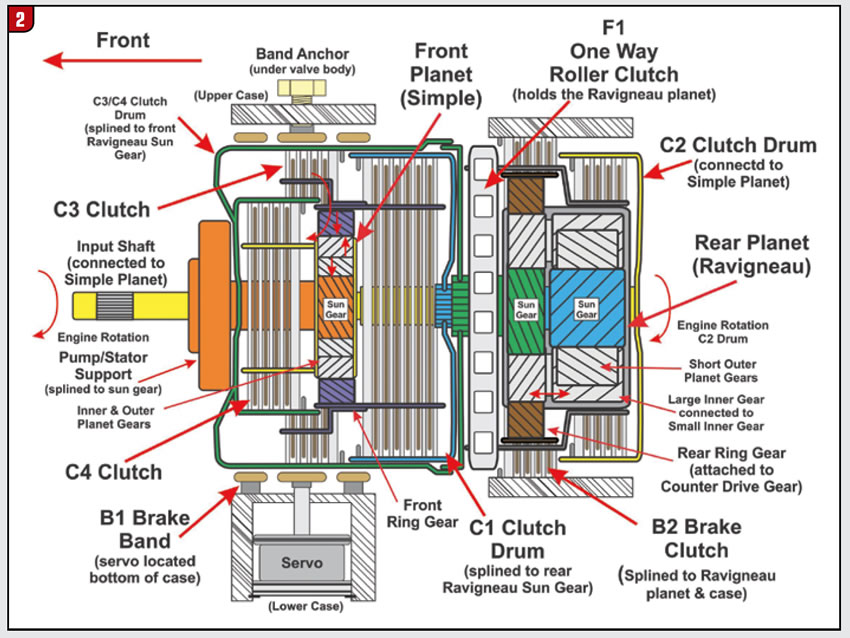

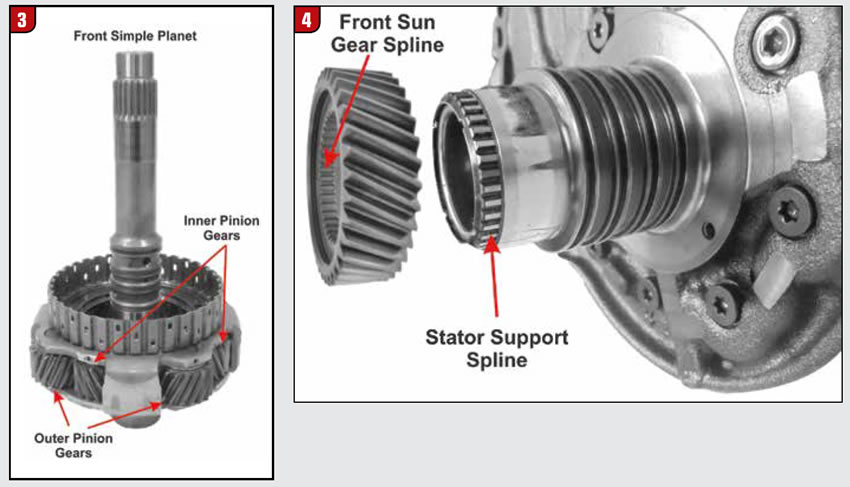
The simple planet assembly has two sets of planet gears, inner and outer (Figure 3). As the simple planet assembly rotates clockwise (same direction as the engine) the inner planet gear will rotate in the same direction around the fixed sun gear splined to the pump stator support (Figure 4). This will cause the outer planet gears to rotate in the opposite direction of the simple planet assembly and engine (as shown in Figure 2). The outer planet gears will drive the front ring gear in the same direction of the simple planet assembly and engine at about half the speed of the input shaft. This design allows the ravigneau planet assembly to be driven in two different ratios 1:1 or 05:1 (Figure 5). A component apply chart is provided to use while diagnosing shifting complaints when they occur (Figure 6). You will notice in the apply chart there is N-Control in the drive position.
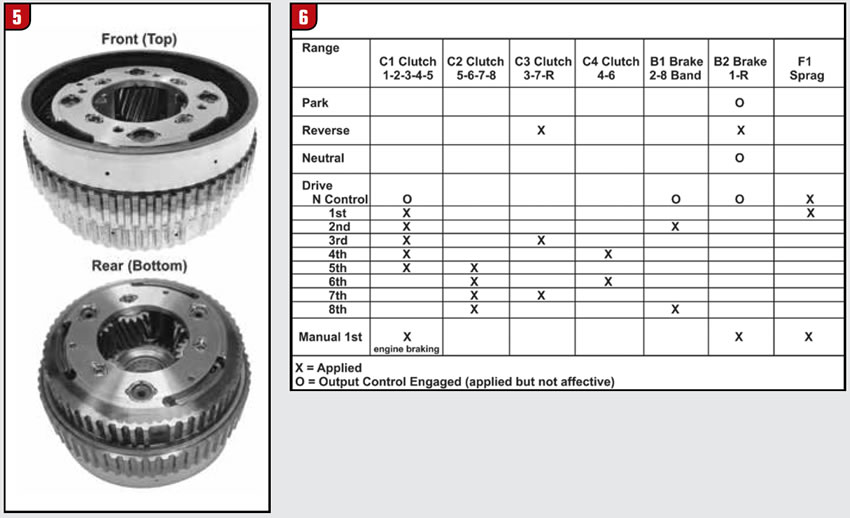
The way the neutral control (N-Control) works is: during deceleration when the vehicle is at low speed (less than 2 mph/3.2 km/h) or stopped in the “D” position, the transmission enters a neutral condition by releasing the C1 clutch. With the reduction of the torque converter drag, the load on the engine is lower, thus fuel economy is enhanced and idling vibration is reduced. There are ten solenoids found in this transmission if equipped with N-Control or only nine without. The solenoids are identified in Figure 7 along with a solenoid apply chart (Figure 8) to help diagnose any shift application problems that could be solenoid related. The information in this article provides a basic understanding of how this transmission works. In later articles from Seal Aftermarket Products we would like to add some electronic information to further diagnose the U880E transmission.
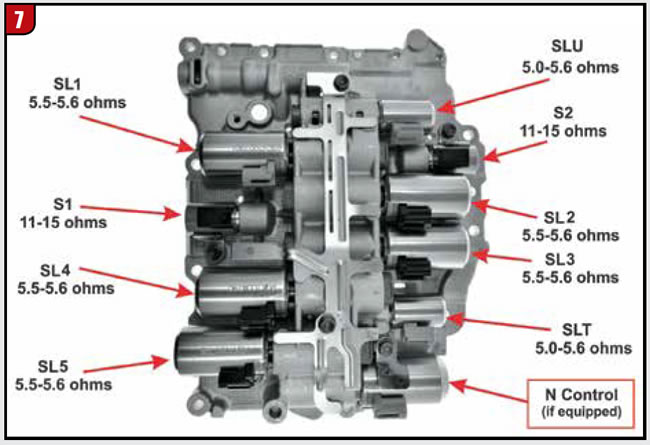
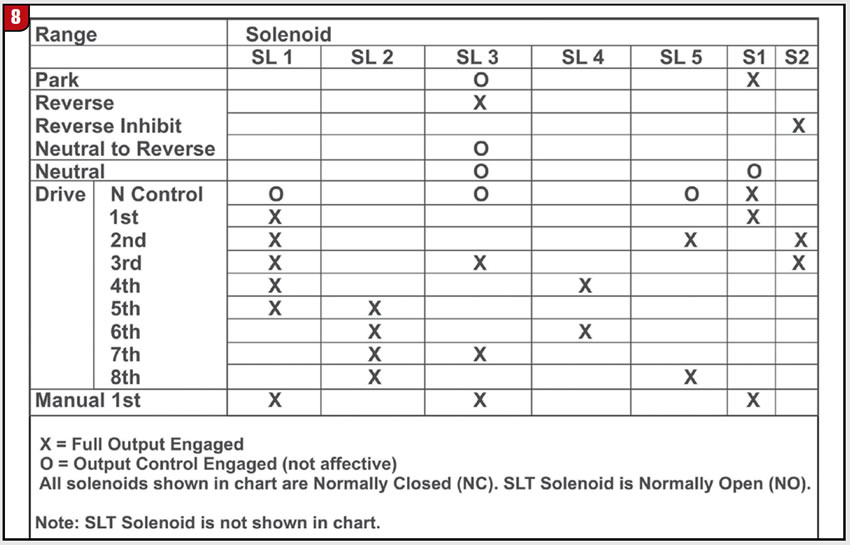
Thanks for reading the “Souza Sezz” column, see you next time!











